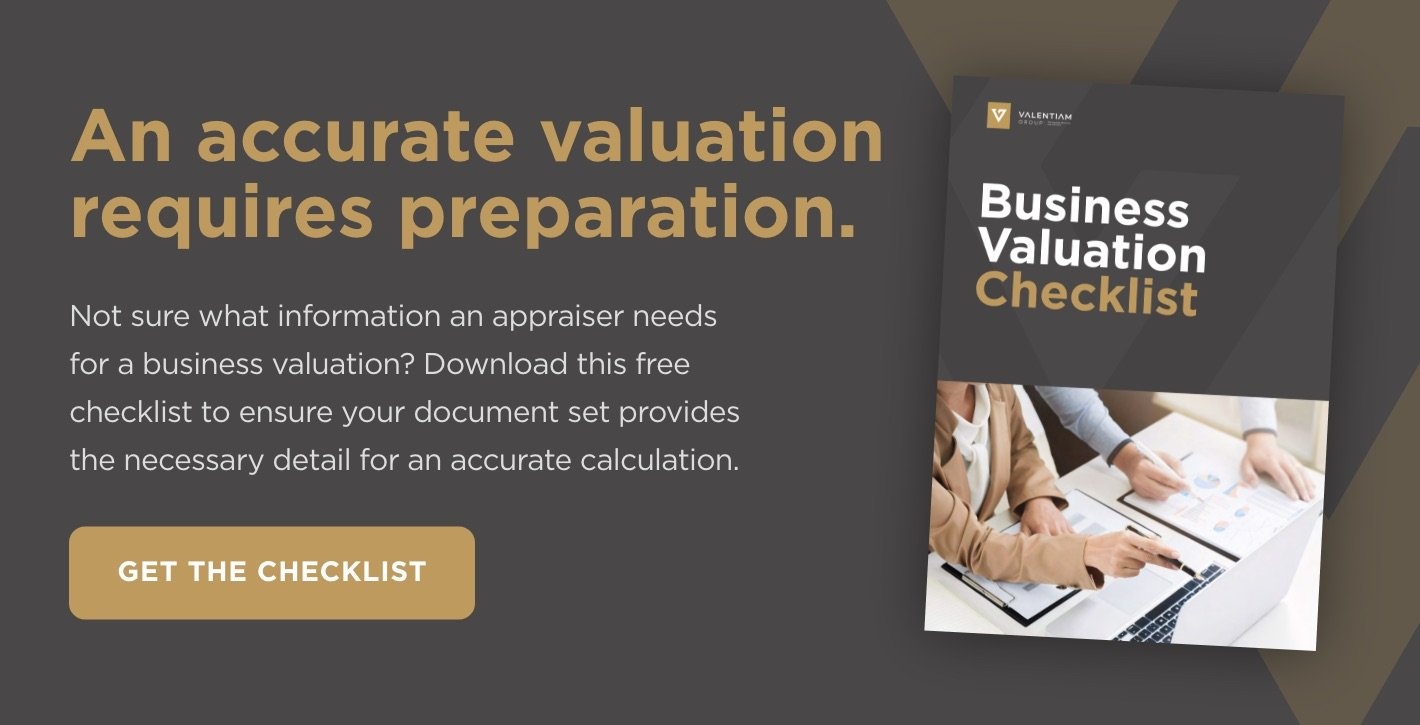How To Create A Business Valuation Report
Posted by Valentiam Group on June 9, 2020

A business valuation report is an attempt to thoroughly document and assess the value of an enterprise or a group of assets, taking into account all relevant market, industry, and economic factors. It encompasses not only an analysis of the Subject Company’s financial data, but also analysis of the industry and comparable companies, the application of the appropriate valuation approaches, and good judgement in the assumptions made.
In this article, we’ll address how to do a business valuation report, the questions the report should answer, and present a sample table of contents for a valuation report, showing all the data and analysis components that go into a comprehensive business valuation report.
Need help calculating the value of your company? Schedule a free discovery call with our valuation experts.
How To Do A Business Valuation Report
In a previous article we discussed in detail the steps for valuing a business; for the purposes of this article, here is a summary:
- Understand the purpose of the valuation.
- Determine the basis of value.
- Determine the premise of value.
- Review the historic performance of the business.
- Determine the future outlook for the business.
- Determine the valuation approach to use.
- Apply discounts.
- Arrive at a determination of value.
In the process of performing these steps, the appraiser will have:
- Gathered data about the Subject Company, comparable companies, the industry, and current market conditions
- Selected the valuation approach or approaches to use
- Performed calculations to determine the value of the company
This data and analysis will provide answers to all the questions the valuation report should answer. Preparing the final report consists of compiling all the information into a well-organized format.
Valuation Report Template
The sample table of contents below shows all the information that might need to be covered in a report. For a large or small business valuation report, this template will cover all the elements that factor into the determination of value.
CONTENTSI Executive Summary
II Introduction
III Company History and Overview
IV General Economic Outlook
V Industry Overview
VI Valuation Approaches
VII Operating Enterprise (Income Approach)
VIII Design of the Replacement Assets
IX Application of Depreciation
X Personal Property Value Summary
XI Real Property Value Summary
XII Tangible Property Value Conclusion XIII Intangible Property Value Conclusion XIV Conclusion of Overall Value XV Statement of Limiting Conditions XVI Certification XVII Appendices |
As shown in the sample table of contents, the final valuation report is comprehensive, extremely detailed, and covers all factors that may impact the value of the business. (Tweet this!)
There are currently several online business valuation calculators, which might be useful to satisfy curiosity regarding the possible ballpark value of a small business. A comparison between the table of contents above and the scant information used to calculate business value in these online applications illustrates why a professional appraisal is advisable for businesses of any size contemplating a sale, or for tax or litigation purposes—and illustrates why comprehensive appraisals are an absolute necessity for large or complex enterprises.
Without accurate information, a business valuation is just a guess.
Business valuation is a complex process that requires expertise—but even the best appraiser can’t calculate an accurate value without accurate and complete information.
Topics: Business valuation
Related Posts
EBITDA Multiples By Industry: An Analysis
EBITDA multiples by industry indicate growth, profitability, and stability of profits in various sectors—and are a quick and easy way to estimate value.
Valuation Methods: A Guide
Different types of business valuation methods are suited to specific needs. Here are the three primary types of valuation techniques and when they should be used.


